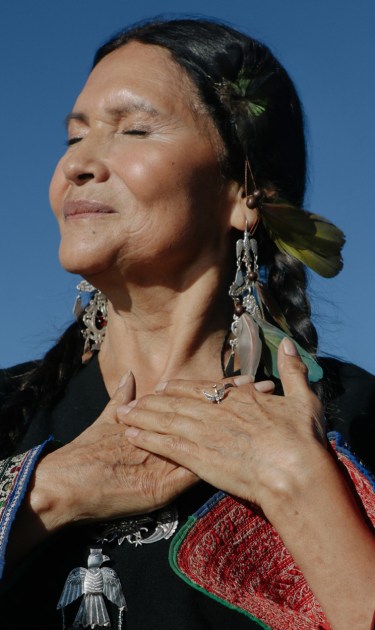With tightly woven braids framing her face, Luzmila Carpio is still gleaming from performing a sneak preview of her forthcoming album earlier in the week. “Firstly, I want to give a warm-loving greeting from La Paz, Bolivia f.k.a. Chuquiapu-Marka elevated at 11,893 feet high,” the Quechua singer decidedly boasted as we commenced our chat. She continues, “We’re in the middle of winter when the earth rests, August is the month we celebrate Pacha Mama (Mother Earth).” Honoring her setting and affirming her connection to the land is intrinsic to Luzmila’s Indigenous-Andean culture and artistry.
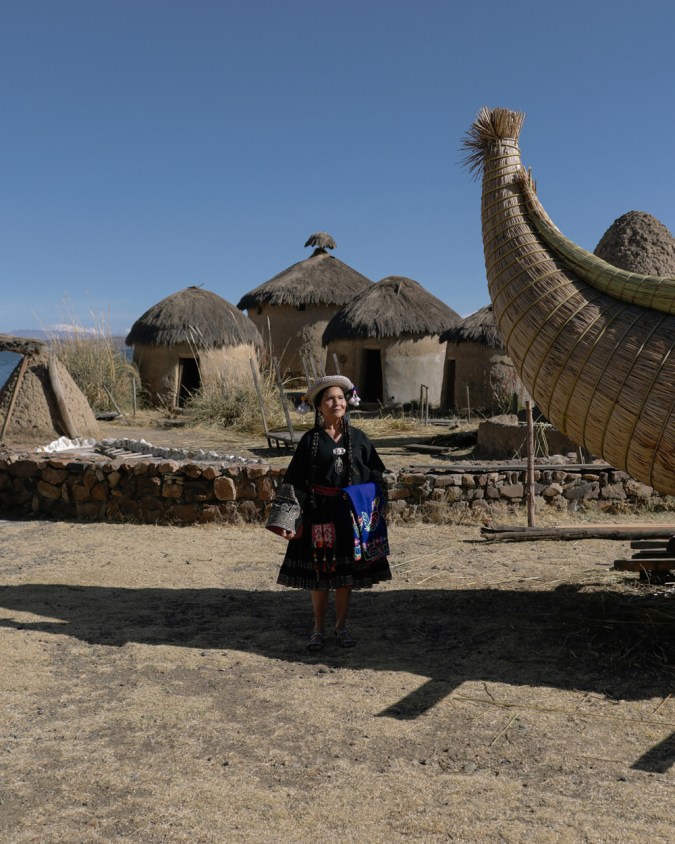
Luzmila Carpio Sangüeza was born in the village of Qala-Qala, Potosi—named after its rocky terrain in Aymara. “There were no Christian or Catholic churches in Qala-Qala. The Spanish hadn’t left their mark there so Aymara and Quechua people spiritually revered the land for its flowing rivers, sweet cactus fruit, peaches, and apples which provided us our sustenance,” she shares. Luzmila reminisces on her upbringing, specifically how she was transfixed with the great condors perched atop the boulders overlooking the region.
Carpio would wake before dawn and travel long distances on foot with her mother to tend to the crops. Along the way, she occasionally stopped to listen to the birds sing. Her mother taught her to distinguish the sounds the avian species were communicating and to mimic them so she could speak their language. She told Luzmila, “when you refine your sound to a pitch as thin as a strand of your hair, the earth receives that sound. In that way, you give thanks to Pacha Mama,” Carpio tells Remezcla. This later characterized Carpio as part of the rare club of singers (think Mariah Carey) renowned for their piercing capacity to belt a whistle register.
Carpio kick-started her artistic career in the mid-60s through sheer gumption. When she was 7 years old she followed her mother’s wish for her to leave her indigenous community and join her older sister in the big city of Oruro to become a “señorita”. On a fateful day, she encountered “a magic box with a speaker,” Carpio recalls. Enraptured with the rhythmic sounds transported through the radio, she set out on foot to discover where they were emanating. After traversing hours through the city unable to find the source, she enlisted help from a new friend she met at a park swing set who then took Luzmila to a nearby radio station. She auditioned amongst other mestizo boys and girls but was subsequently laughed at and shown the door due to the prevailing racism that has long existed towards indigenous people in Andean countries. After being ridiculed for singing her Quechua language, the budding songstress was determined to learn songs in Spanish so she begged her sister to teach her; she caved and taught her the Bolivian national anthem. Carpio set out once more to a different radio station, Elenco de Radio Universidad de Oruro. This time she sang in Spanish, but once again was halted mid-song, “Now sing your little huaynito from your village.” Luzmila recalls the pianist chiding her after noticing her accent.
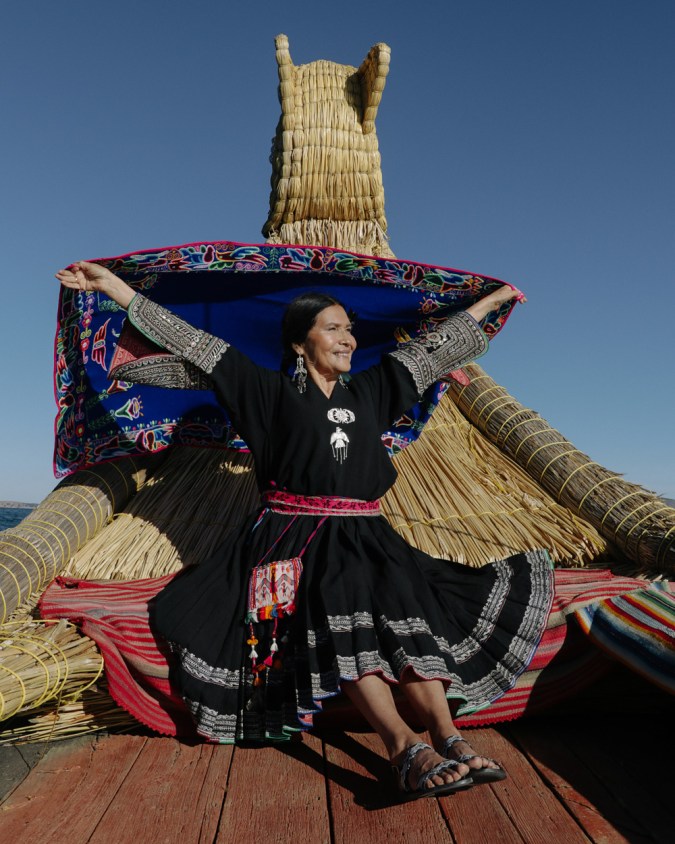
Once she sang her Quechua tune in a perfect pitch the pianist told her that he would take her under his wing as a mentor to teach her how to pronounce Spanish melodies. “When I was 14 or 15 years old, I had a more developed sound and understood how to better navigate a city occupied by a majority mestizo people. I learned to blend into that society, but I realized there was no respect for our cultures. The songs were unfamiliar to my upbringing. I would see monuments scattered around the city but they were all foreign, none of them were of women that had braids like mine or dressed with an Aguayo. There was nothing around to represent or affirm our visibility and history.” Luzmila comments.“The time came when I would use this as fuel to sing about our identities and our revolutionary indigenous ancestors such as Bartolina Sisa.” Despite the adverse cultural environment, the legendary artist was motivated to be a source of validation for her ancestral roots: “We are dignified people, our code is ‘don’t be a liar, lazy, or a thief,’ ‘Ama Llulla, Ama Quella, Ama Sua,’” she asserts. From then on, Carpio decided to sing in Quechua and Aymara as a testimony of love for her culture and a rebuke towards oppression.
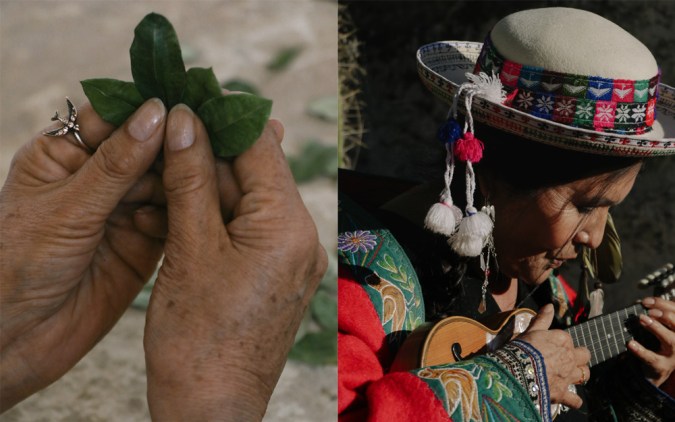
Carpio transitions to a croon as she reminisces on the tune Chillchi Parita. The song written by Luzmila narrates Abuela Grillo– a metaphorical animated short film depicting the life of an indigenous grandmother who gets exploited for her resources, causing a drought. With the uprising and help from her village, she obtains the strength to resist and in turn, brings back the rain.
Her entrancing high notes and lively oeuvres have amassed worldwide recognition through international tours, more than 25 impressive albums, and even being appointed the ambassador of France in 2006–later awarded by the French government as Grand Officer of the Order of Merit. As an undeniable icon of Bolivian Andean culture, Carpio is “one of the most prolific indigenous singers of South America” as stated by Rolling Stone.
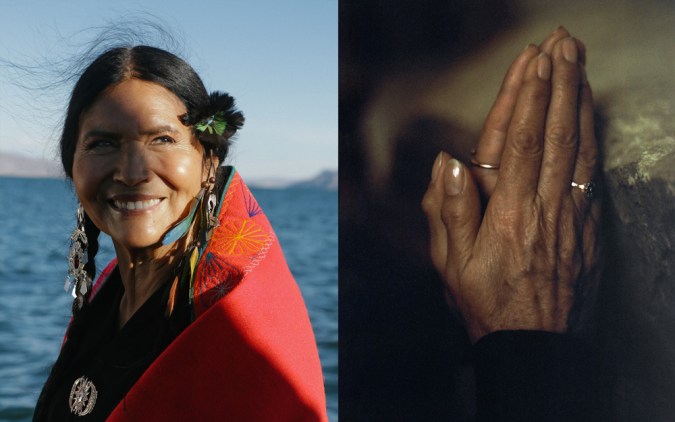
Carpio is proud and unapologetic about her reverence for Pacha Mama, decolonization, and women’s equality. “Many years ago, a lady from a village I visited wanted me to play my charango for her while she sang a beautiful song. Other women gathered to join as I strummed the chords. Midway through, one of their husbands came and said, ‘Give the charango to me, women are singing so a man is supposed to play!’ All the women stood up at once and yelled ‘No! We want Luzmila to play! She knows how to play the charango!’” Carpio giggles retelling the proud moment as an autodidact of the instrument at a time when it was not typical for a woman to learn. Carpio is reclaiming power by positioning herself as a revolutionary artist who has created her way, inspiring others to do the same.
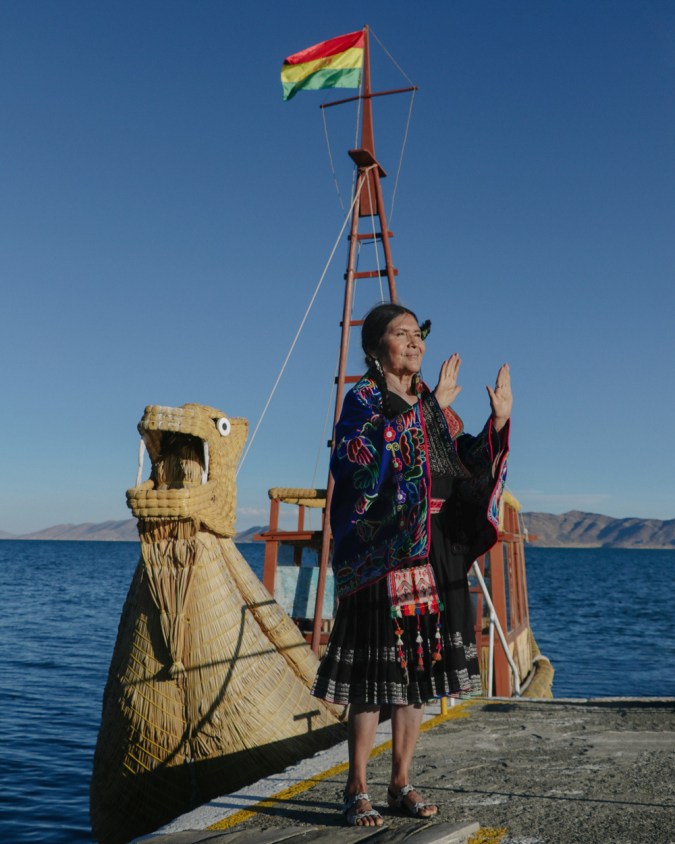
She pauses to reflect on her legacy dedicated to her mother, the Quechua language, and culture. “I remember giving my mom company when she went to help heal and aid sick people. She would tell me, ‘we have to sing our songs with all of our might to give them love, energy, and happiness so that it lifts their spirits to motivate them to recover and keep living.’ When I started performing in front of large audiences, I realized that I can help heal hearts and minds with my music by singing my language. In that way, I made my mother proud as an indigenous woman,” says Carpio
The Bolivian icon never imagined that there would be actualized progress for indigenous and women’s equality. Despite Bolivia having the highest percentage of Indigenous people in Latin America, it’s only within the past two decades that they’ve been able to gain more political power to have greater self-determination for their communities. “[Indigenous] Bolivians would say, ‘oh, we will never be able to gain any political power or improve our rights. This is just how it is and always will be,’ so to see that improvement and representation while I’m alive is a dream come true. It feels like there’s finally the opportunity to create justice for us all and to ensure the preservation of our communities, land, and culture. Now it’s up to the future generations to carry that forward!” exclaims Carpio.
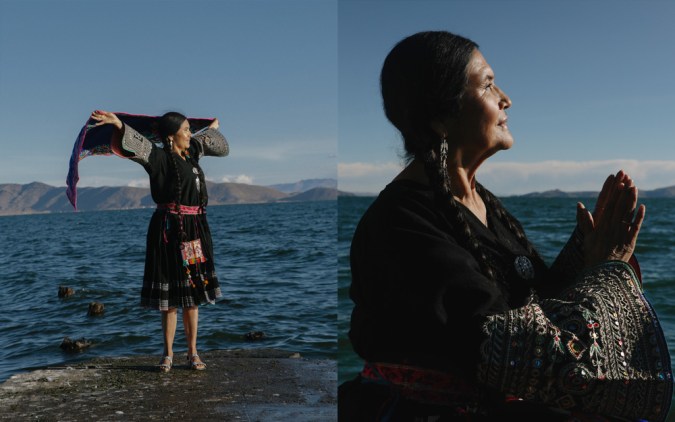
As for her new album titled Inti Watana: El Retorno Del Sol, the former ambassador has partnered with an Argentinian producer from ZZK Records. They previously remixed songs of hers in their EP: Luzmila Carpio Meets ZZK, garnering high praise for its eclectic electronic infusions and for helping to expand Carpio’s work to new and younger audiences. The enduring artist gives us a clue about her album, sharing that they have worked on the arrangements for Inti Watana, for a revamped sound that maintains its sonic authenticity. Furthermore, ZZK Records is in the process of directing a documentary titled Luzmila y Los Pajaros as an ode to her inspirational upbringing, compositional process, and comprehensive career. “I hope the new album and documentary inspires future generations to not be indifferent towards nature and to live in better harmony with the earth. Younger people must believe in themselves and recognize the interconnectedness between one another and all that exists within the cosmos, she shares. “If we continue to forge our paths with community and compassion, we’ll keep moving forward while maintaining our existing cultural roots around the world.”
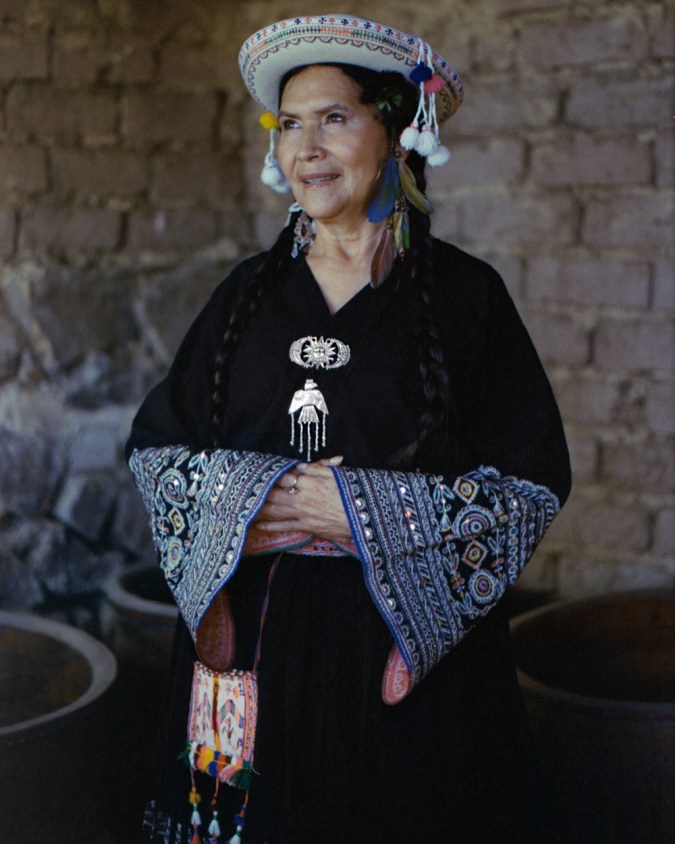
A special thank you to Inca Utama Hotel.
